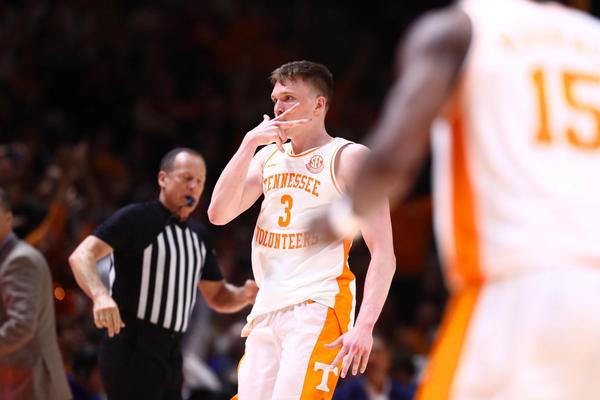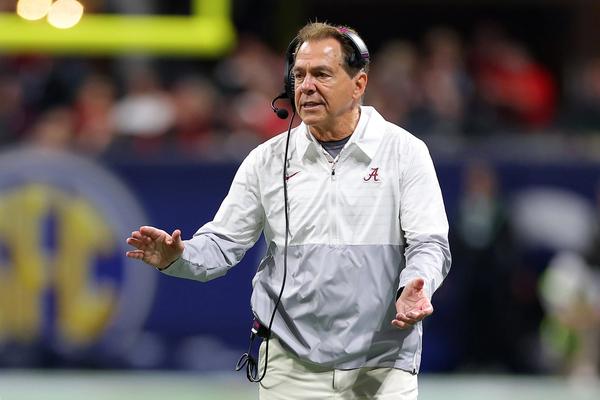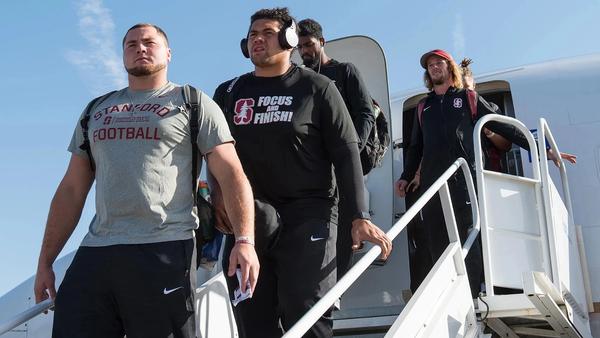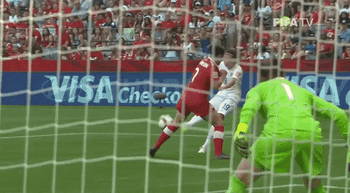
👍 The pros
The GIST: Like it or not, the transfer portal is here to stay. But with the debate still raging about its effect on athletes and college sports in general, it’s crucial to understand all sides of the portal’s impact. Let’s start with what supporters like about the portal:
💪 Athlete empowerment: As discussed on Monday, it was way harder for athletes to transfer schools before 2018. By opening up and simplifying the process, the portal has given student-athletes significantly more power over their college education and playing careers, allowing them to seek the best opportunities and fit as their needs evolve.
- Whether that means chasing a more lucrative NIL payday, proactively choosing their coach, or simply moving closer to home, student-athletes are no longer trapped in situations that aren’t serving them.
🌱 Growth opportunities: Allowing players to hunt the best available team, competition, and scholarship opportunity isn’t inherently bad. Athletes who didn’t have elite options out of high school can later develop and improve to the point that their dream team comes knocking — and why shouldn’t they level up?
- Take last season’s breakout men’s basketball star Dalton Knecht, who went from a virtual unknown at Northern Colorado to powerhouse Tennessee’s overnight sensation and last week’s No. 17 pick in the NBA Draft. An epic glow-up.
👭 Reloading rosters: NCAA dynasties no longer need to rise and fall with superstar classes — top-tier teams can replace graduating seniors with portal talent to stay competitive year after year. Case in point? Oklahoma softball, who graduated nearly half its 2024 roster and must reload from the portal to take aim at their fifth straight natty.
👎 The cons

The GIST: Despite all those benefits, the portal has some serious trade-offs, too. Here are a few of the reasons critics are wary of the non-stop transfer train.
😵💫Roster management: The portal creates ongoing, unique challenges for coaching staffs, who must balance traditional recruiting with portal pick-ups — not to mention contending with the ever-present threat of bolting players. Add in the delicate dance of avoiding impermissible contact, tampering, and inducements, and roster management has become a massive undertaking.
- HC legends like Villanova men’s basketball’s Jay Wright and Alabama football’s Nick Saban cited the lethal combo of the portal and NIL incentives as part of their motivation to retire. Not everyone wants to be HC and roster math lady.
🎯 Poaching and parity: The flipside of individuals’ aforementioned growth moves is the damage to the programs they leave behind. It’s exceptionally difficult for smaller, less affluent schools to compete when their homegrown stars seek bigger, richer pastures, further deepening the NCAA’s have and have-not divide.
🤑 NIL chasing: Elite athletes transferring to bank more NIL money has become standard practice, and whether that’s good or bad depends on how you feel about players prioritizing finances over program loyalty. But in an NCAA culture with deep roots in tradition and devotion to one’s alma mater, bailing for bigger bucks can leave a bitter taste in fans’ mouths.
- This also compounds the poaching and parity problem, since the most prestigious programs have more financial resources to lure top athletes than the rest of the collegiate pack.
👋 Character-building: Both coaches and players are incentivized to constantly seek the next best thing, which means they could fail to invest in what’s already in front of them. As Texas women’s basketball director of player development Sydney Carter says, “Transferring is not always the answer.”
- “[Having] discipline and perseverance through times when you’ve reached adversity is only gonna build that character up for you later on in life,” she explained. “Don’t run from things being hard, and learn how to handle hard, because life is hard.”
⏭️ What’s next

The GIST: College sports are in their reinvention era, and the transfer portal is no exception, so we’re eyeing the following as the landscape continues to shift.
Window shortens for revenue sports: Last Tuesday, the Division I Council approved a proposal to decrease transfer portal windows for football and women’s and men’s basketball from 45 days to 30. The goal? To “[provide] coaches with more information about roster stability before students leave campus at the end of the academic year.” The council could officially enact the change in October.
Conference realignment alters athlete experience: Former Pac-12 athletes will soon find themselves regularly traveling cross-country for conference games, potentially degrading their college experience and jeopardizing their academics — likely triggering more transfers.
- Arizona State softball player and LA native Shannon Cunningham’s viral August 2023 X post demonstrates how realignment will strain some athletes. As new Big 12 members, Cunningham’s Sun Devils could have to travel as far as Orlando, FL, to play UCF next season.
NCAA seeks congressional NIL help: College sports’ organizing body is hoping to leave the governing to Congress as the NIL/transfer portal dynamic spins out of its control. Whether legislators step in or not, the NCAA is taking action to reign in the portal’s perceived negative effects as we speak.
Enjoying this article? Want more?

Sign up for The GIST and receive the latest sports news straight to your inbox three times a week.

